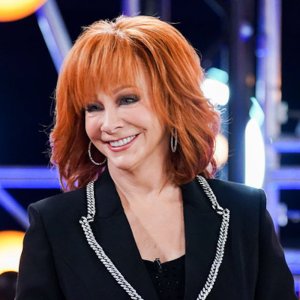The Beatles’ 1968 self-titled release, known by most as The White Album, contains two LPs’ worth of greatness. It’s all the more amazing because of the incredible diversity from song to song. None of the tracks were released as singles, but many have achieved rock immortality anyway. Here we’ll be exploring the meaning behind “Dear Prudence” by The Beatles. It’s one of the most majestically catchy songs in the Beatles’ oeuvre.
Videos by American Songwriter
Many have likely adored this song throughout the years without stopping to think about its origins. Who exactly was Prudence? What inspired John Lennon to write a song about her? And who was responsible for the over-the-top drumming on the track? (Hint: it wasn’t Ringo Starr!) Let’s find out…
[RELATED: Artist’s Remorse: The Album The Beatles Regretted Making]
Beat the Retreat
It’s common knowledge among even casual Beatles fans that the group made a trip to India in 1968 to study Transcendental Meditation with the Maharishi Mahesh Yogi. What isn’t quite as well-publicized is the fact that they weren’t the only ones on that retreat. Some of the other guests were pretty well-known in their own right.
Mike Love of The Beach Boys, who’s still a very prominent practitioner of TM, was there. So was the pop/folk singer Donovan, who taught the Fab Four a guitar-picking technique that would show up on several White Album songs, including “Dear Prudence.”
Sister Song
And then there was Prudence Farrow. Farrow’s sister Mia, who joined her on the trip, was already famous as an actress (her smash horror movie Rosemary’s Baby had arrived earlier in ’68) and, in what was a short-lived marriage, as the wife of Frank Sinatra. Prudence Farrow didn’t have Hollywood aspirations, but instead was on the trip because she was extremely interested in learning more about TM. However, her devotion to the practice worried some of the others in Rishikesh, as they feared she might be having a kind of breakdown.
This is where John Lennon enters the picture, as he explained to David Sheff in an interview that was turned into the book All We Are Saying: The Last Major Interview with John Lennon and Yoko Ono. “A song about Mia Farrow’s sister, who seemed to go slightly barmy, meditating too long, and couldn’t come out of the little hut that we were livin’ in,” Lennon remembered. “They selected me and George (Harrison) to try and bring her out because she would trust us. If she’d been in the West, they would have put her away. We got her out of the house. She’d been locked in for three weeks and wouldn’t come out, trying to reach God quicker than anybody else. That was the competition in Maharishi’s camp: who was going to get cosmic first. What I didn’t know was I was already cosmic. (Laughs.)”
An Early Version of the “Threetles”
The recording of “Dear Prudence” is notable because Ringo Starr did not play drums on the track. Feeling like he was a bit left out of the group dynamic at the time, Starr took an impromptu holiday from the sessions that produced The White Album songs “Dear Prudence” and “Back in the U.S.S.R.” As a result, Paul McCartney filled in on drums on those tracks.
Anyone who has followed McCartney’s post-Beatles career knows that he has often recorded entire albums where he’s pretty much been the only instrumentalist, so handling the drums wasn’t out of his range. In fact, his work on “Dear Prudence” is superb, especially in the cacophonous final verse. By that time, the trio of Lennon, McCartney, and George Harrison had built the track, little by little, from a guitar-and-vocal folk song into wild, psychedelic rock.
They were aided by the fact that they weren’t recording in their usual Abbey Road environment. Instead, they cut the track at Trident Studios in London, which, unlike Abbey Road at the time, had eight-track recording capabilities. That contributed to the wild finish, as all kinds of instrumental bits were added on top of the main core of McCartney’s chaotic drumming and throbbing bass, Harrison’s ever-ascending guitar, and Lennon’s hearty vocals.
The Meaning Behind “Dear Prudence” by The Beatles
“Dear Prudence” is proof that even the most specific incident can become universally inspiring in the hands of a brilliant songwriter. Lennon mostly keeps the lyrics simple, and you can hear the initial inspiration for the song in the opening lines: Dear Prudence/Won’t you come out to play?
Along the way, he doles out lines that hit home with anyone feeling isolated or forgotten. The wind is low, the birds will sing/That you are part of everything, Lennon sings, suggesting a universal harmony that’s there if you just know how to listen for it. Elsewhere, he advises letting go of the pressures of the adult world, asking her to smile like a little child. The clouds form a daisy chain, an image that’s both a nod to the flower power of the times and a hint about the interconnected nature of all living things.
Perhaps that’s why the maximalism of the music in the final verse is so apropos, as it suggests a series of disparate elements coming together into a wondrous whole. It turns out Prudence Farrow didn’t really need the advice that John Lennon was offering way back in ’68, as she was simply doing the retreat homework a bit more diligently than some of the others on the trip. But “Dear Prudence,” the song she inspired, has coaxed many others in their own metaphorical huts to leave them behind for sunnier, happier climes and times.
Photo by Keystone Features/Hulton Archive/Getty Images
